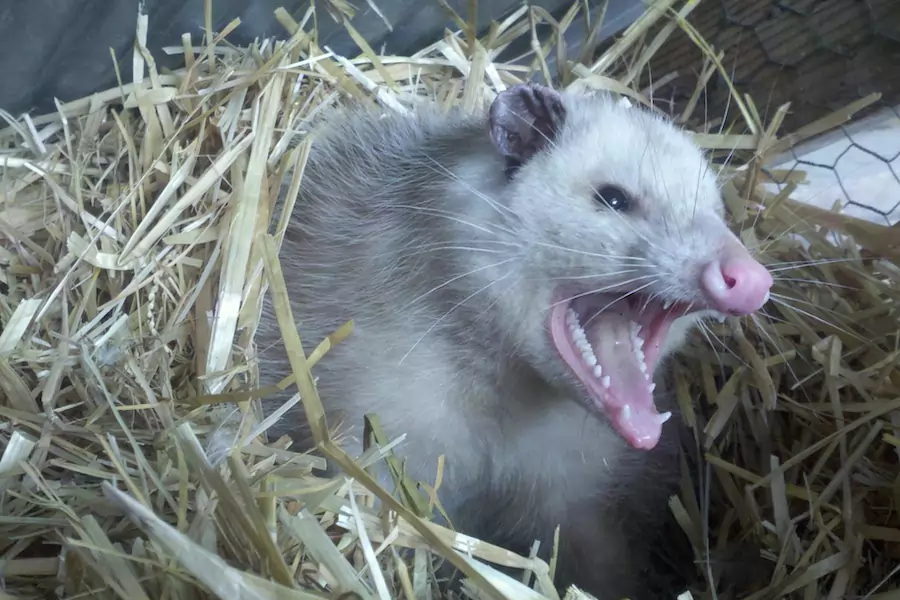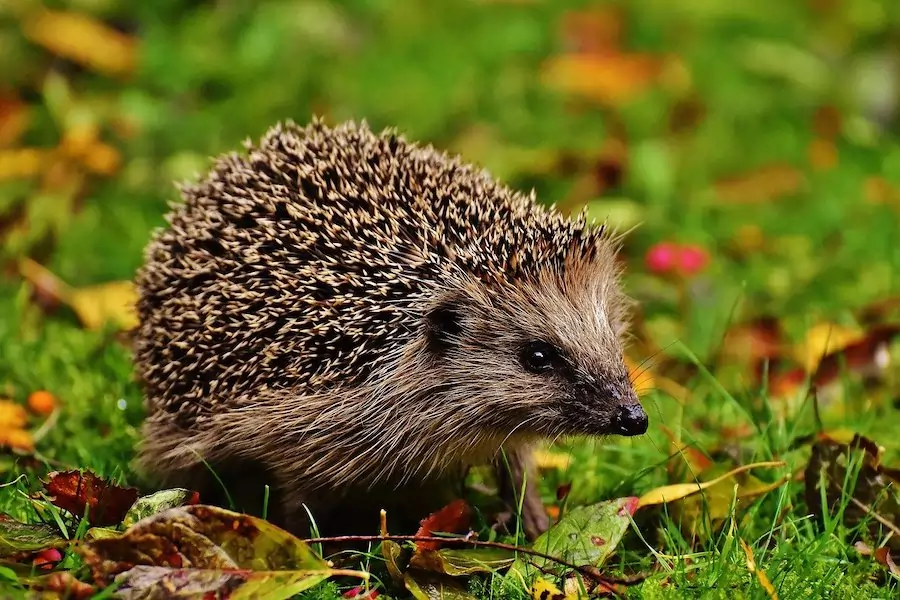Omnivore animals are creatures of all types that eat a diverse variety of food. Their sources of nutrition include both meat and vegetation.
The word ‘Omnivore’hails from a Latin word combining two words, ‘omnis‘ meaning ‘all’, and vores stems from vorare meaning ‘to consume or eat.’
The most interesting part of the omnivore is that they can survive in any environment compared to the classic predators and herbivores. They can also be scavengers.
The Quick List of Omnivore Animals
There is an extensive and diverse list of omnivore animals, which includes birds, land animals, and marine life.
Here’s an example list of different types of animals that are omnivores.
| Bird Omnivore | Aquatic Bird Omnivores | Reptile Omnivores | Mammal Omnivores |
|---|---|---|---|
| Robin | Duck | Box turtle | Pig |
| Woodpecker | Seagull | Aquatic turtle | Chimpanzee |
| Oriole | Swan | Wood turtle | Squirrel |
| Jay | Crane | Forest tortoise | Hedgehog |
| Thursh | Flamingo | Blue-tongued skink | Chipmunk |
| Grouse | Rallidae | Bearded dragon | Bear |
| Pheasant | Raccoon | ||
| Turkey | Badger | ||
| Blackbird | Opossum | ||
| Crow | Hog-nosed skunk | ||
| Raven | |||
| Ostrich |
Let’s move on to discuss just some of these types in a little more detail and provide some examples.
Birds as omnivores
It might surprise you to think of any birds as being omnivores. But there are actually a lot. You might already know that many backyard birds will search for worms …as well as eat berries.
So their diets are adaptable and can change and alter to different stages of life or differing seasons. And according to their need at that time.
Most birds actively forage in the morning, and omnivore birds’ diet includes seeds, nuts, berries, rodents, small mammals, nectar, anthropods, and even eggs.
You might also like What Do Herons Eat? Also, check out my article answering the question Do Ducks Eat Fish?
Seagulls eat plants and meat
Many of us may have been pestered by seagulls trying to steal food, or hanging out nearby to pick up any remaining scraps. This is common, and they’re not fussy about what they eat.
- Seagulls are commonly found all over the world
- Their habitat is predominantly coastal, but they have adapted to urban areas
- They eat small animals, shellfish, fish, rodents, insects, carrion, seeds, nuts, and also scavenge.
- An adult seagull eats up to 20 percent of its weight per day.
Here’s the answer to the question Do Seagulls Sleep?

Turkeys are omnivores
Whether wild or domesticated turkeys, they have a fairly diverse omnivore diet.
- Turkeys are native to North America and are predominantly found in forests
- Their diet includes acorns, seeds, grains, reptiles, insects, berries, grapes, fruits, frogs, etc.
- They constantly forage for food.
- An average turkey consumes 93 pounds of feed.
Turkeys also feature on our list of top 11 dumbest animals on the planet. A lighthearted look at the less smart features of animals.
Crows and rooks are omnivores
Rooks live across Europe and Asia. They typically nest in villages and other semi-rural areas, mostly avoiding urban or heavily built-up areas.
Rooks will feed on a variety of insects, worms, root crops, invertebrates, small birds, and mammals.
The crow is from the Corvids family, and they mostly live near or within urban areas. They like to eat nuts, seeds, berries, small birds and mammals, insects, and invertebrates.

Reptiles and fish eat meat and vegetation
Reptiles consume more protein during both their juvenile and adulthood. They eat eggs, small animals, berries, grasses, and fruits.
Animals that eat grasses are called granivores, here’s a list of animals that eat grass.
Turtles are omnivore animals
Aquatic turtles, Box turtles, Wood turtles, Common snapping Turtle, and Forest turtles are omnivores.
Some turtles inhabit freshwater, while some prefer seawater. Some also like to dwell in warm waters and around coral reefs.
Omnivore turtles and tortoises like to eat a variety of vegetation, insects, and animal proteins. They might also dine on fruits and other water herbs.
The diet of turtles depends on their size and age. The young need to eat every day, while adult turtles will typically eat every two or three days.
Box Turtles (Terrapene)
- Box turtles are native to North America.
- They spend most of their time on land but near shallow freshwater.
- They eat plant matter, fruits (apples, mangoes, berries, etc.), and animals proteins.
Philippine forest turtles prefer aquatic plants, small fish, and crustaceans. They are found in northern Palawan and surrounding islands.
Wood turtles range across the northeastern areas of the United States, spreading into areas of Canada. They usually inhabit woodlands borderlands and pastures. Wood turtles’ diet includes insects’ larvae, fish, crayfish, plant matter, and invertebrates.
Aquatic Turtles spend their time in the water while Semi-aquatic turtles (sliders and pond turtles) split their life in water and on land. They are considered omnivore animals, and like to eat various foods, including grubs, earthworms, snails, caterpillars, beetles, grasses, fruit, mushrooms, berries, flowers, and even carrion.

Fish and insects are also omnivores
Freshwater Fish, Freshwater angelfish, Barb, Piranhas, catfish, and opaleyes are different types of fish.
They seek out and consume algae, fruits, seeds, invertebrates, animal tissue, and carcasses.
They also eat insects such as spider beetles, wasps, grasshoppers, and crickets. They will also eat plants, nectar, and leaves.
Mammals are omnivore animals
To continue the breadth of animal types that are omnivores, here’s a sample selection of mammals that also eat meat and plant matter.
Pigs
The Pig (genus sus) are classic omnivores. They are foraging animals, primarily like to eat leaves, fruits, flowers, fish, eggs, small mammals, and insects.
Domesticated pigs are also fed corn and soybean meals with added vitamins and minerals when reared as livestock.
They mostly search for food using their sensitive snout.
Pigs are found on every continent except Antarctica. Most though, thrive better in milder climates with moderate temperature and weather conditions. Reared pigs are able to accommodate cooler conditions due to shelter and a consistent food source.
An adult livestock pig can eat 9-18 lb (4-8 kg) of swill and food leftovers per day, while the wild pig’s daily diet depends on the pig’s age and size.
They typically consume about 3-5 percent of their total body weight per day in small meals, consuming around 7-11 meals per day.

Opposum
These excellent tree climbers are scavengers who munch on anything available, even in garbage, dumps, and leftovers.
They also hunt chickens, mice, worm snakes, and other small mammals. They are pouched animals (marsupials).
- They can be found North, South, and Central America.
- They consume a variety of foods, including mammals, fruits, birds, insects, nuts, grass, and carrions.
- They forage through the nighttime. The scarcity of food may make them search during the day too.
- An adult opossum can reach 10 inches long and weighs up to 90 grams.
- They are famous as ‘Play Possum,’ as they see any predator they play dead.
Find out more about when animals are active. Or look at whether possums bite.

Foxes are omnivore animals
Foxes are nocturnal animals that eat a diverse variety of food. There are different kinds of species, and most of them are omnivores.
Fennec foxes are the world’s smallest foxes. These predators munch on berries, fruits, carrion, rodents, rabbits, and insects too. They scavenge for food in the garbage as well.
Click here for some 34 quick facts about fennec foxes.
- Foxes are found throughout North America, Europe, Australia, Asia, and North Africa.
- They live in a wide variety of land, mountains, grassland, deserts, and urban environments
- An average fox eats around 1-2 pounds per day.
Foxes have a sharp sense of hearing that helps to locate food. They can even hear the sound of underground digging.
Find out everything a fox eats. Or check out our video below.
Bears
Bears belong to the family Ursidae. They have a unique digestive system with an elongated digestive tract that allows them to digest meat and vegetation.
American black bears, grizzly bears (known as brown bears), and polar bears are all omnivores.
- Black bears eat fruits, sedges, grasses, fruits, berries, nuts, and carrots too. They are found in contiguous states of America, Canada, Alaska, etc.
- The grizzly bears or brown or Kodiak bears are good hunters. Brown bears gorge on nuts, leaves, flowers, roots, fish, fungi, mammals, and insects. They live in mountains and forests of north and Nothern America, Europe, and Asia.
- The polar bears are found throughout the circumpolar arctic. The primary source is seafood, including seals, fish, seas birds, and reindeers too. In Summers, they also eat berries, plants, and other vegetations.
An average bear may consume 40 kgs of food per day.
Next, check out our Ranger Planet Grizzly Bear 101 video below. Or see our list of what eats a bear!
Hedgehogs
These small creatures sound like they should be insectivores or herbivores, yet they are classified as omnivores. They got their name based off their foraging habits.
These nocturnal mammals have a great defensive mechanism. When they sense danger, they curl themselves into a ball, enabling the spikes on their backs and head to form a spiney almost impenetrable ball.
- Hedgehogs have a wide variety of living options, such as; suburban gardens, scrublands, savannas, and forests. Hedgehogs are found in, Africa,Europe, Asia, and Newzealand.
- They dine on slugs, worms, beetles, green beans, tomatoes, berries, melons, mice, frogs, and small birds as well.
- They don’t eat much, only requiring 70- 100 calories per day.
Find out the difference between Hedgehogs and Porcupines.

Omnivore animals – More wildlife help!
We hope this has helped answer the question as to what are omnivore animals. This is not an exhaustive list, there are many more. But here is a variety.
To learn more about this subject and others, be sure to check out the Ranger Planet YouTube Channel. Also, for homeschoolers and teachers, check out Green Kids for practical hands-on learning for your children.

